Eduardo Rodrigues
RLTHF: Targeted Human Feedback for LLM Alignment
Feb 19, 2025



Abstract:Fine-tuning large language models (LLMs) to align with user preferences is challenging due to the high cost of quality human annotations in Reinforcement Learning from Human Feedback (RLHF) and the generalizability limitations of AI Feedback. To address these challenges, we propose RLTHF, a human-AI hybrid framework that combines LLM-based initial alignment with selective human annotations to achieve full-human annotation alignment with minimal effort. RLTHF identifies hard-to-annotate samples mislabeled by LLMs using a reward model's reward distribution and iteratively enhances alignment by integrating strategic human corrections while leveraging LLM's correctly labeled samples. Evaluations on HH-RLHF and TL;DR datasets show that RLTHF reaches full-human annotation-level alignment with only 6-7% of the human annotation effort. Furthermore, models trained on RLTHF's curated datasets for downstream tasks outperform those trained on fully human-annotated datasets, underscoring the effectiveness of RLTHF's strategic data curation.
Causal Modeling of Soil Processes for Improved Generalization
Nov 10, 2022Abstract:Measuring and monitoring soil organic carbon is critical for agricultural productivity and for addressing critical environmental problems. Soil organic carbon not only enriches nutrition in soil, but also has a gamut of co-benefits such as improving water storage and limiting physical erosion. Despite a litany of work in soil organic carbon estimation, current approaches do not generalize well across soil conditions and management practices. We empirically show that explicit modeling of cause-and-effect relationships among the soil processes improves the out-of-distribution generalizability of prediction models. We provide a comparative analysis of soil organic carbon estimation models where the skeleton is estimated using causal discovery methods. Our framework provide an average improvement of 81% in test mean squared error and 52% in test mean absolute error.
Wildfire risk forecast: An optimizable fire danger index
Mar 28, 2022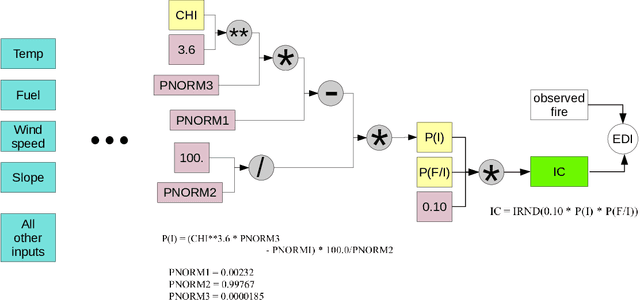
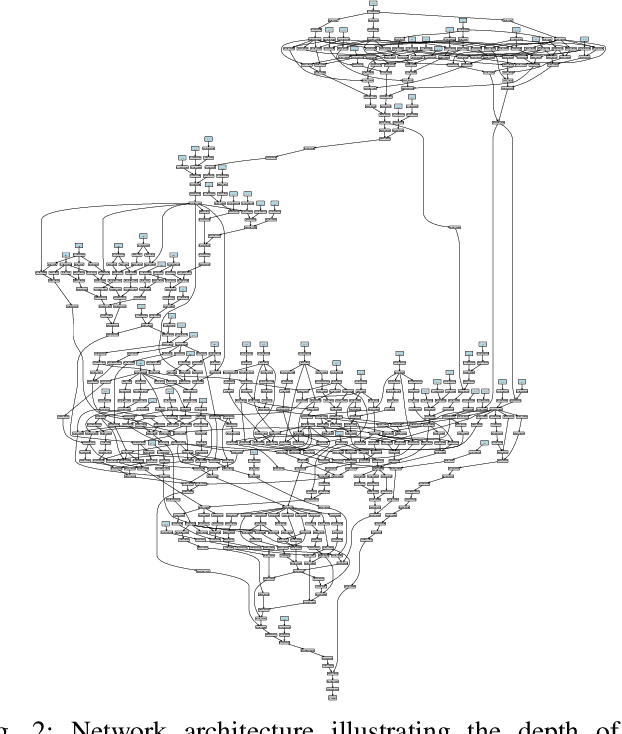
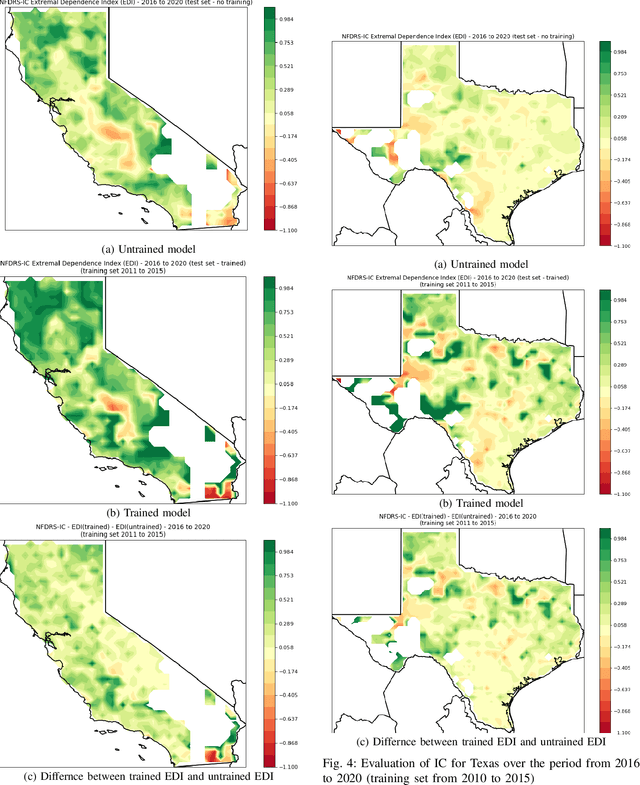
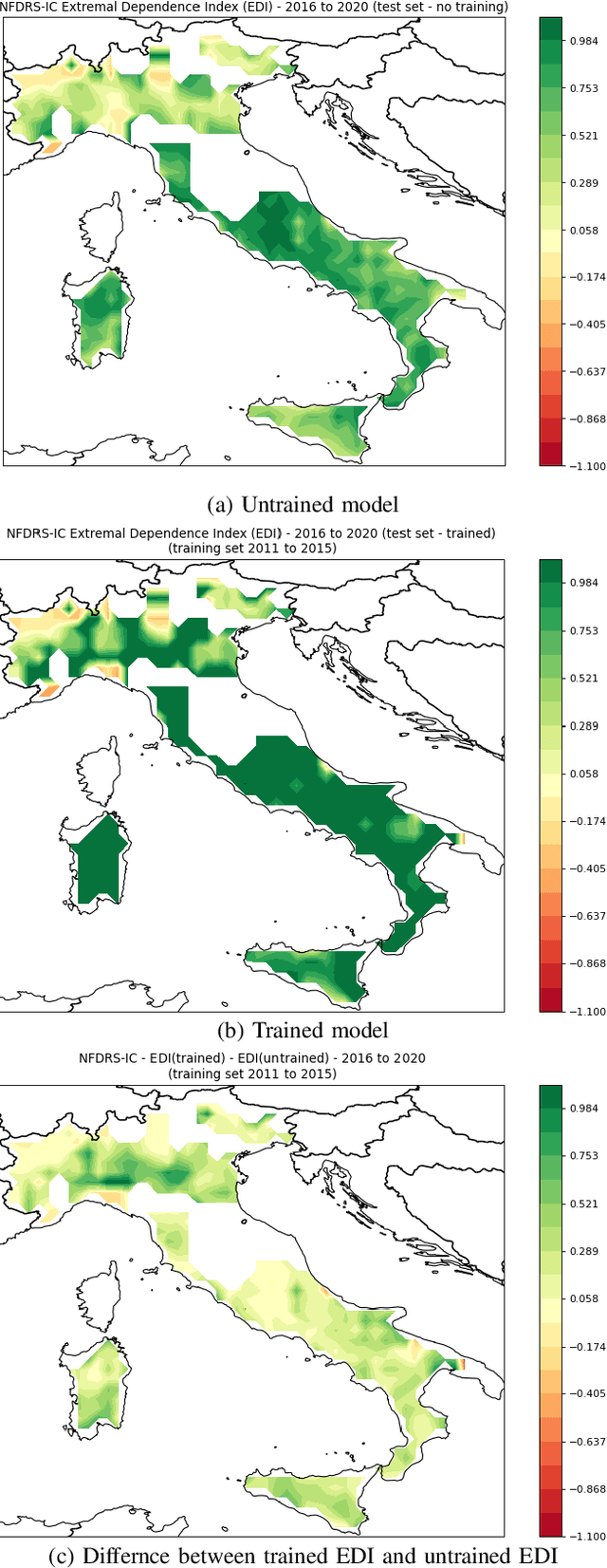
Abstract:Wildfire events have caused severe losses in many places around the world and are expected to increase with climate change. Throughout the years many technologies have been developed to identify fire events early on and to simulate fire behavior once they have started. Another particularly helpful technology is fire risk indices, which use weather forcing to make advanced predictions of the risk of fire. Predictions of fire risk indices can be used, for instance, to allocate resources in places with high risk. These indices have been developed over the years as empirical models with parameters that were estimated in lab experiments and field tests. These parameters, however, may not fit well all places where these models are used. In this paper we propose a novel implementation of one index (NFDRS IC) as a differentiable function in which one can optimize its internal parameters via gradient descent. We leverage existing machine learning frameworks (PyTorch) to construct our model. This approach has two benefits: (1) the NFDRS IC parameters can be improved for each region using actual observed fire events, and (2) the internal variables remain intact for interpretations by specialists instead of meaningless hidden layers as in traditional neural networks. In this paper we evaluate our strategy with actual fire events for locations in the USA and Europe.
Decadal Forecasts with ResDMD: a Residual DMD Neural Network
Jun 21, 2021

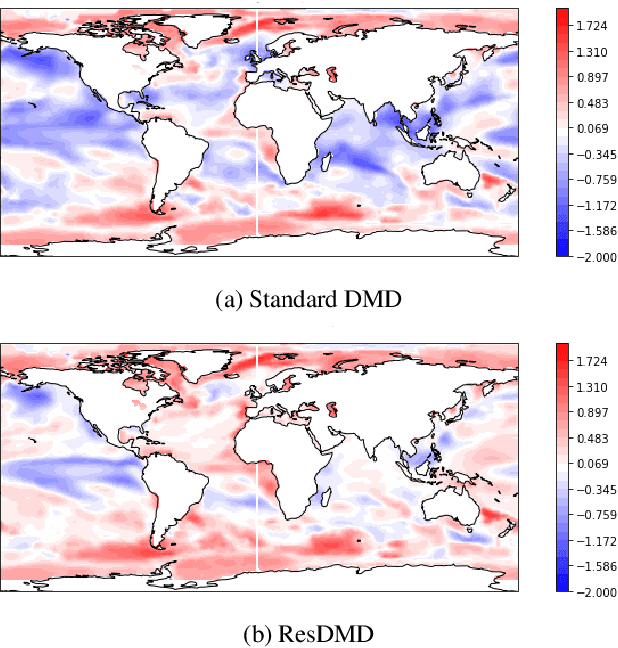

Abstract:Operational forecasting centers are investing in decadal (1-10 year) forecast systems to support long-term decision making for a more climate-resilient society. One method that has previously been employed is the Dynamic Mode Decomposition (DMD) algorithm - also known as the Linear Inverse Model - which fits linear dynamical models to data. While the DMD usually approximates non-linear terms in the true dynamics as a linear system with random noise, we investigate an extension to the DMD that explicitly represents the non-linear terms as a neural network. Our weight initialization allows the network to produce sensible results before training and then improve the prediction after training as data becomes available. In this short paper, we evaluate the proposed architecture for simulating global sea surface temperatures and compare the results with the standard DMD and seasonal forecasts produced by the state-of-the-art dynamical model, CFSv2.
A modular framework for extreme weather generation
Feb 05, 2021
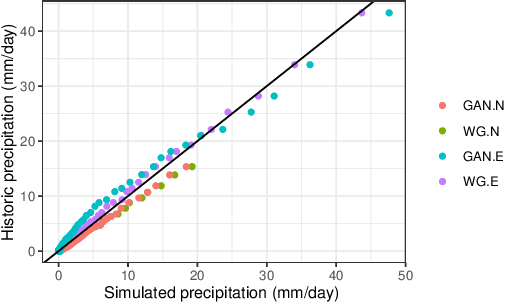
Abstract:Extreme weather events have an enormous impact on society and are expected to become more frequent and severe with climate change. In this context, resilience planning becomes crucial for risk mitigation and coping with these extreme events. Machine learning techniques can play a critical role in resilience planning through the generation of realistic extreme weather event scenarios that can be used to evaluate possible mitigation actions. This paper proposes a modular framework that relies on interchangeable components to produce extreme weather event scenarios. We discuss possible alternatives for each of the components and show initial results comparing two approaches on the task of generating precipitation scenarios.
Machine Learning in High Energy Physics Community White Paper
Jul 08, 2018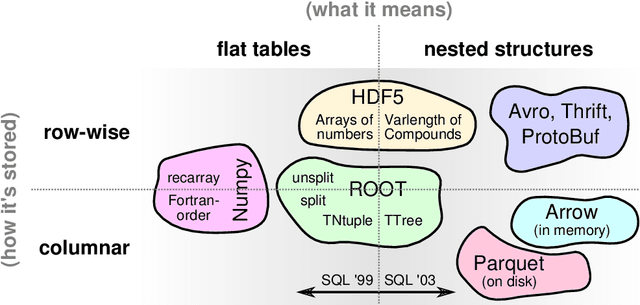
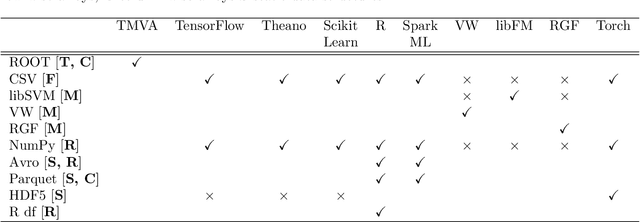

Abstract:Machine learning is an important research area in particle physics, beginning with applications to high-level physics analysis in the 1990s and 2000s, followed by an explosion of applications in particle and event identification and reconstruction in the 2010s. In this document we discuss promising future research and development areas in machine learning in particle physics with a roadmap for their implementation, software and hardware resource requirements, collaborative initiatives with the data science community, academia and industry, and training the particle physics community in data science. The main objective of the document is to connect and motivate these areas of research and development with the physics drivers of the High-Luminosity Large Hadron Collider and future neutrino experiments and identify the resource needs for their implementation. Additionally we identify areas where collaboration with external communities will be of great benefit.
 Add to Chrome
Add to Chrome Add to Firefox
Add to Firefox Add to Edge
Add to Edge